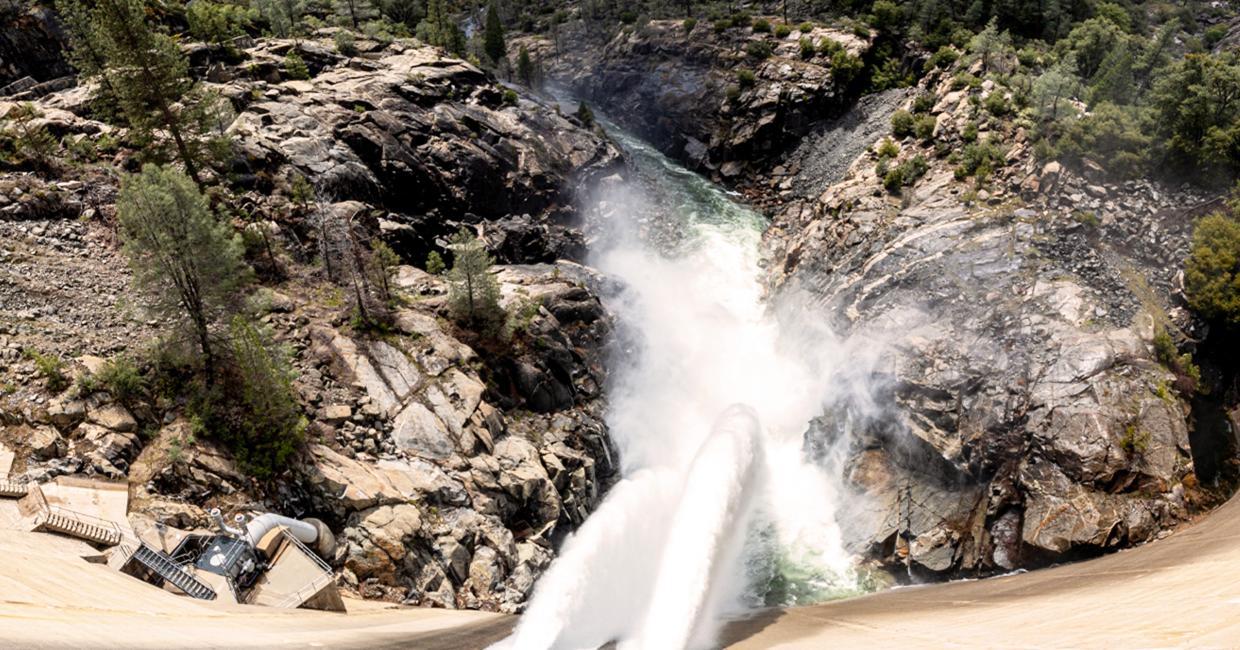When you think of the O'Shaughnessy Dam and the reservoir which provides up to 80% of the San Francisco Public Utilities Commission's (SFPUC) drinking water supply, it's important to note that the agency is committed to environmental stewardship. A key aspect of this is ensuring that the Tuolumne River remains a vibrant natural resource. This not only includes preserving life in the river like fish and other species, but also ensuring continued recreational purposes like rafting.

To achieve this, Instream Flow Release Valves (IFRs) are used in a tunnel at the base of the Dam. These valves were originally installed over 100 years ago for a different purpose during the initial construction of the Dam. In the 1960s, they were repurposed and relocated to their current position slightly downstream from the Dam as a part of Hetch Hetchy System upgrades. These valves provide minimum flows into the Tuolumne River, year-round, a vital link in the ecosystem.
Considering their age, the original valves had become worn and were now well past their useful lifespan. To remedy this, the SFPUC is undertaking the multi-year O’Shaughnessy Dam Outlet Works project, which includes upgrading and improving the IFRs. Once in place, they will ensure the protection of the environment onward another century.
Access to these valves starts from a gravel maintenance road at an access building built into the side of the steep cliffs of the Tuolumne River valley, and then down a 50 ft shaft into a tunnel. To prepare this remote site for installation of the new valves, a new system had to be created in order to lower large, heavy items like new pipe, structural steel, and of course the new valves. In addition, access around the valves is being improved with new walkways and grating. Once complete, the interior of the old IFRs will be gutted and a new pipe will be inserted to allow for discharge of the new valves.
It is projects like these, perhaps seen only by a few intrepid hikers, that demonstrate how the SFPUC is continually working to maintain one of the most sophisticated and ecologically sensitive water supply systems in the country.


